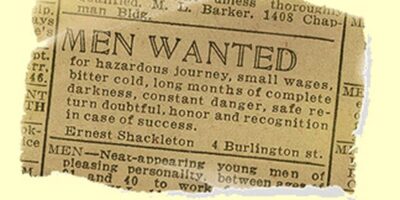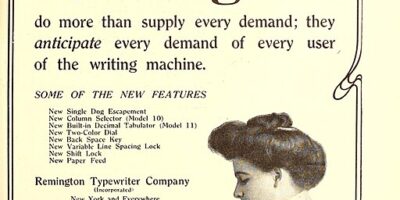by Kristine Riley
This is part two of a four-part series on abolitionist pedagogy, Star Wars’ Andor, and aspirations for teaching and learning at CUNY.
In my previous post, I explored some challenges to practicing abolitionist pedagogy in higher education and discussed opportunities to use Star Wars to think about and imagine new abolitionist praxes. I was first introduced to the concept of prison abolition[1] as a freshman at UC Santa Cruz, when I ran into some friends outside the dining hall as they were waiting for a special lecture, keynoted by some professor they couldn’t stop talking about. And like so many people who have engaged with her work, Angela Y. Davis’ words that evening changed my life forever. Looking back over a decade-and-a-half later, it’s important to acknowledge developing my political consciousness didn’t happen immediately; most of what I heard that night went right over my head and challenged things that, at the time, were foundational to my understanding of the world and its possibilities. But over time, through repeated opportunities and in community with others, things changed; I changed. I can honestly say I don’t think I ever would have become an educator if I wasn’t first a student of abolition in and outside of the classroom.
One of the critical and humbling messages that stood out to me from Andor was the reminder that political consciousness isn’t always linear, timely, or without flaws; nor is it inevitable. I believe that within this sentiment is also the reminder that the prospect of revolutionary change is everywhere and that one of the roles of an activist educator is to help people see the ways specific ideas, opportunities, and relationships, like abolition, make that transformation possible. Without appropriating or conflating theory with action, it is important to recognize the ways education can be revolutionary or open up paradigms and pathways to revolutionary actions. When our relational commitments—be it engaging in political education with comrades or practicing dialogic education[2] in the classroom with our students—are embedded with curiosity, criticality, and compassion, our mutual dependency and investments in each other create more possibilities for freedom than any one individual could imagine.
In Rogue One, Cassian’s revolutionary spirit is captured in his iconic line of “Rebellions are built on hope.” Without the details and perspective in Andor, however, it would be easy to make assumptions Cassian’s political education journey and take for granted the alchemy that led to his eventual position as a captain in the Alliance. When the audience first meets him in Andor, Cassian is reluctant to trust even his closest loved ones with his quest for freedom. Despite the challenges of his childhood on Kenari[3], his life under imperial rule on Ferrix[4], his teenage experiences with imprisonment and war, Cassian’s original goal of aligning with the rebellion was transactional: to “win and walk away”[5] with enough money to escape his immediate, personal experiences of oppression. Unlike the rest of the battalion he joins—made up of undercover aristocrats, a revolutionary intellectual, current and former members of the Empire, and even an egocentric fraud—he is recruited as a hired mercenary for a singular job. However, his interactions with each member of the squad shape and propel Cassian’s journey from an individual trying to survive in Andor, to a diehard revolutionary in Rogue One, providing a critical moment of reflection for viewers about political and intellectual radicalization.[6] It’s not always linear, or obvious. It can be thwarted or advanced through the multifarious contradictions in one’s lived experience. It might not happen as expected, or at convenient and even necessary moments. On the contrary, it can and does happen in desperate moments of survival. Sometimes in epiphany and other times through collective struggle. Through persistent, repeated counterhegemonic projects and moments of reclamation after many successive failures.
In many ways, this dynamic can be similar to how we meet our students and, quite honestly, how we begin our journeys as CUNY student-adjuncts. Navigating the current state of our city’s public higher education system simultaneously as underfunded students and underpaid educators can feel impossible. Additionally, adjuncting is not just part of all graduate student fellowships and often supplementary income necessary for survival. Like Cassian, we may default or retreat into a solo mission of survival because navigating relationships with dozens of students while trying to foster and build experimental spaces in the classroom can feel impossible, especially when some students’ journey out from ignorance to understanding intersects with other students’ lived experiences of harm and trauma. Decades of austerity compound the ways we can feel alone, unsure, overwhelmed by the scale of what is required of the modern CUNY student.[7] Moreover, the founding philosophies, organizational structure, and material goals of the academy encourage an individualistic, competitive mindset when it comes to success. Punitive grading and shame or fear in classroom discussions can leave students and educators feeling anxious and insecure, rather than empowered, in their learning experiences. Many adjuncts receive little to no pedagogical training or support from their departments–let alone a praxis guided by abolition–so we are on our own, likely self-directed, journey, where we will inevitably encounter struggle and failure in an environment with unique disdain for both.
In this liminal space, we simultaneously share experiences with Cassian and his comrade-teachers. Our pedagogy or course topics may be introducing some students to abolitionist values, practices, and histories for the first time. Others may be keenly aware of imperial antagonisms, but unfamiliar with possibilities of solidarity.[8] There is no guarantee the diversity of student experiences will result in particular political analyses, nor that the collective’s perspectives will sync up into a shared understanding–let alone solidarity–during the course of a semester. We may also be learning new things about abolitionist praxis or evolving in our own understandings while we teach because of and through dialogue with our students. Maybe profound moments of understanding will happen, or transformative conversation will occur. Acknowledging there will be complexities, contradictions, moments of misunderstandings, and even failure can build community with our students and other educators; not just as objectives on a syllabus or tactics to produce high marks in end of semester reviews, but as reminders that another world is possible. In this way, our pedagogical practice can honor the abolitionist-inspired sentiment that no one’s opportunity to learn is disposable—not even our own.[9]
Because semesters are short and learning is life-long and never limited to just the classroom, I try to think about the ways pedagogy can create a foundation or touchstones to return to, should these transformations happen later. This can happen not just through assigned readings or deep conversations, but also in pedagogical practices that make space for dialogue and, potentially, solidarity with our students. It is possible to approach crafting class policies, such as due dates or extensions, as mutual agreements that respect student and adjunct labor.[10] Encouraging and affirming proactive dialogue about conflicts and concerns can make instructors allies in problem solving, rather than arbiters of legitimacy.[11] Incorporating low stakes assignments or ungrading that encourage curiosity, experimentation, and exploration prioritizes learning over letter grades.[12] Approaching assessment and feedback as an opportunity to generate dialogue with students, rather than to justify a letter grade, can encourage critical reflection and continued exploration beyond one assignment or class.[13] These ways of relating and communicating with each other demonstrate abolitionist pedagogy because, as Cassian discovers later in the series, it is when we find and create supportive relationships of interdependence—and if we’re lucky, community—that we begin to see new possibilities. Not as distraction or antagonisms to our pursuits, but vital to our survival and potential to thrive.
Kristine Riley is a PhD candidate in Sociology and a Fellow at the Teaching and Learning Center.
[1] For a concise definition on prison abolition and its relation to the prison industrial complex, see this research from Critical Resistance: https://criticalresistance.org/mission-vision/not-so-common-language/.
[2] See Chapters 2 and 3 of Freire, Paulo. 2000. Pedagogy of the Oppressed. 30th anniversary ed. New York: Continuum.
[3] For a brief history on Kenari, see Anon. n.d. “Kenari.” Wookieepedia. Retrieved February 5, 2024 (https://starwars.fandom.com/wiki/Kenari).
[4] For a brief history on Ferrix, see Anon. 2024. “Ferrix.” Wookieepedia. Retrieved February 5, 2024 (https://starwars.fandom.com/wiki/Ferrix).
[5] White, Susana, dir. 2022. “Aldhani.” Andor.
[6] I contextualizing the term “radicalization” within abolitionist pedagogy and practice, I think of the quote by Mariame Kaba: “Let this radicalize you rather than lead you to despair.” See Saleh, Reema. 2023. “‘Let This Radicalize You Rather than Lead You to Despair.’” Chicago Reader. Retrieved January 10, 2024 (http://chicagoreader.com/arts-culture/book-review/let-this-radicalize-you-mariame-kaba-kelly-hayes-haymarket-books/).
[7] For coverage of the impact of austerity budgeting on CUNY, see Ahmad, Shomial. 2023. “Winning against CUNY Austerity.” Clarion, April 26, May 2023; and CUNY Digital History Archive. 2015. “1978-1992 Retrenchment – Austerity – Tuition.” CUNY Digital History Archive. Retrieved February 5, 2024 (https://cdha.cuny.edu/coverage/coverage/show/id/43).
[8] In the opening to a collection of essays exploring the concept, Mie Inouye writes that the ideology of solidarity is “a shared vision of a just society that aligns with but exceeds our material interests, that motivates us both because it would make our lives tangibly better and because we find it inspiring and attractive” (p 20). For this and other thoughtful writings on solidarity, see Chasman, Deborah, Matt Lord, and Joshua Cohen, eds. 2023. On Solidarity. Haymarket Books.
[9] For a video series unpacking and exploring this phrase, see Gossett, Reina, Dean Spade, and Hopre Dector, dirs. 2014. No One Is Disposable: Everyday Practices of Prison Abolition.
[10] For TLC resources, see Mondello, Kaitlin, Elizabeth Decker, and Lais Duarte. 2020.“Developing Your Teaching Persona and Classroom Community,” May 1, Teaching and Learning Center, CUNY GC; and Franklin-Phipps, Asilia. 2021.“Decolonizing Pedagogy.” Presented at the Teach@CUNY 2020 Summer Institute, May 3, Teaching and Learning Center, CUNY GC.
[11] For a TLC resources, see Anon. 2019.“TLC Workshop: Conflicts as Sites of Learning, 10/28,” October 23, Teaching and Learning Center, CUNY GC; and Laksimi-Morrow, Sakina. 2018. “Developing A Socially Conscious Pedagogy: Lessons in Teaching, Learning, and Unlearning.” Visible Pedagogy. Retrieved February 5, 2024.
[12] For TLC resources, see Hurson, Laurie, and Pedro Cabello del Moral. 2024.“Student Agency and the Labor of Grading,” February 21, Teaching and Learning Center, CUNY GC; Badue, Ana, Molly Bauer, and Kristi Riley. 2022.“Learning Can Be Fun! Creating Low-Stakes Assignments,” December 8, Teaching and Learning Center, CUNY GC; and Teaching and Learning Center, CUNY Graduate Center. 2024. “Low Stakes – TLC Assignment Library.” Assignment Library: Low Stakes Assignment. Retrieved February 26, 2024 (https://tlcassignments.commons.gc.cuny.edu/tag/low-stakes/). For an overview of “ungrading”, see Diaz Viana Neto, Marcelo. n.d. “Ungrading – Center for Teaching and Learning.” Ungrading. Retrieved February 26, 2024 (https://commons.hostos.cuny.edu/ctl/ungrading/).
[13] For TLC resources, see Bauer, Molly, Kristine Riley, and Oriana Mejias Martinez. 2023.“Toward Generative Assessment,” November 15, Teaching and Learning Center, CUNY GC.










Leave a Reply